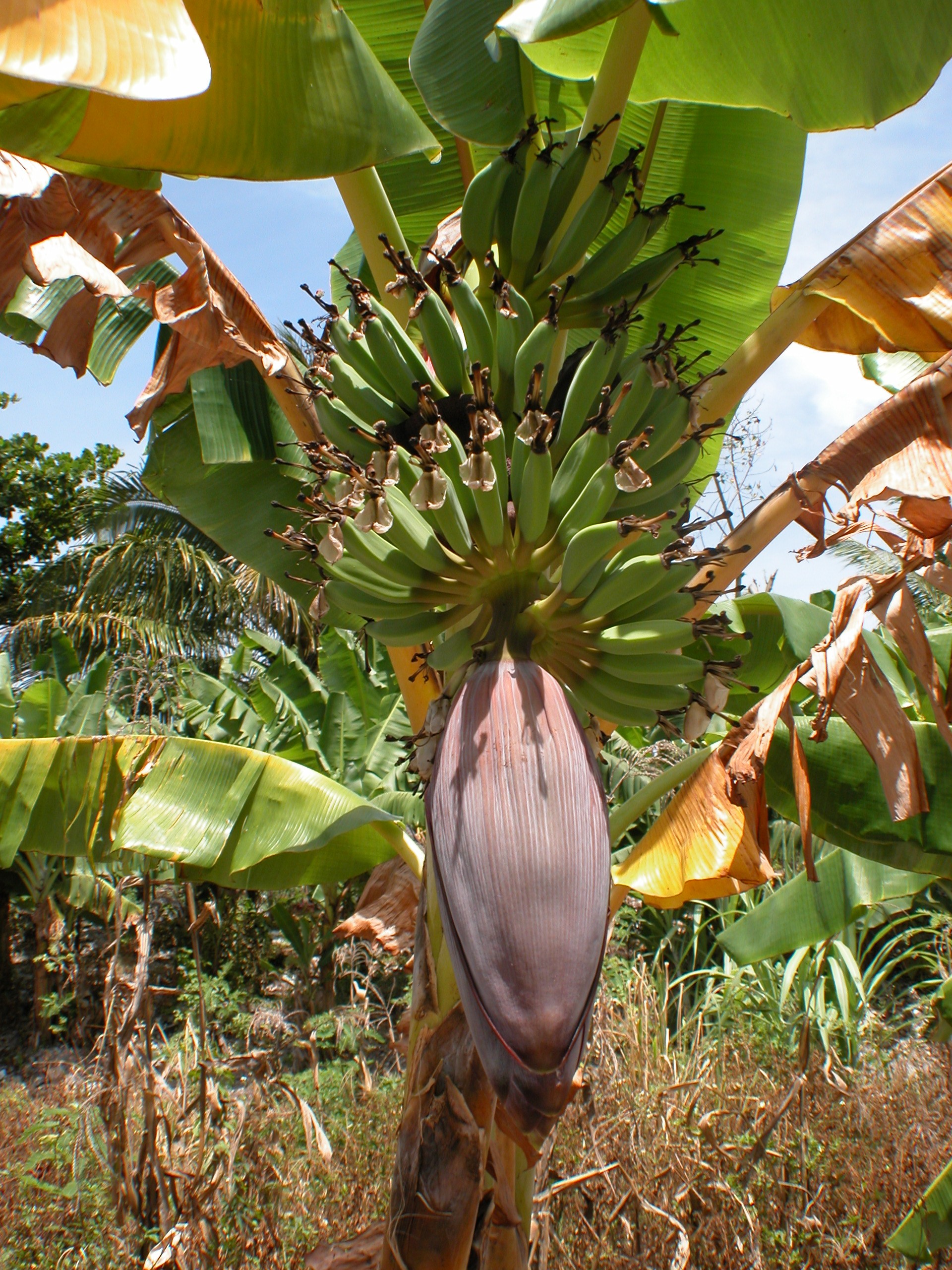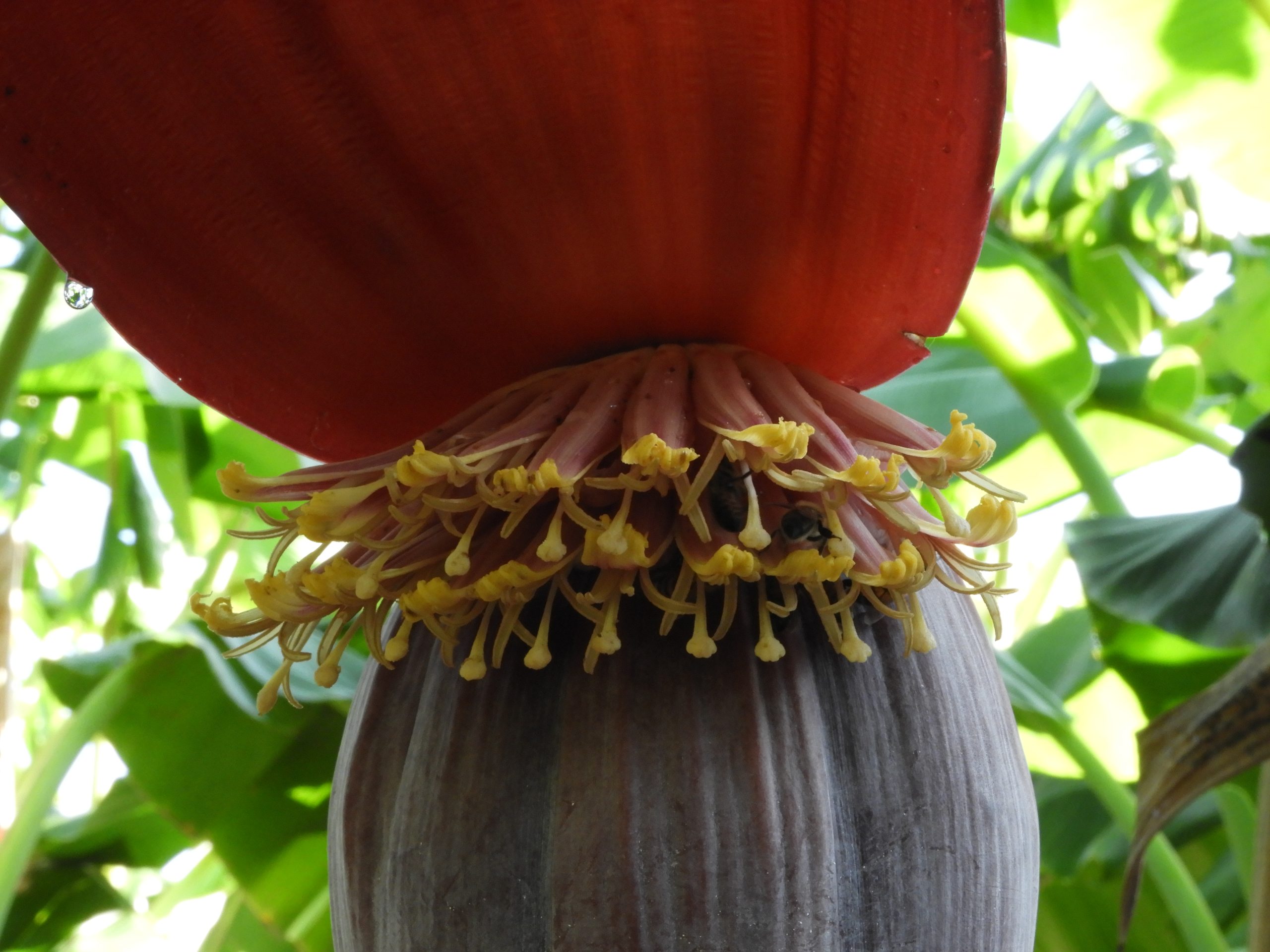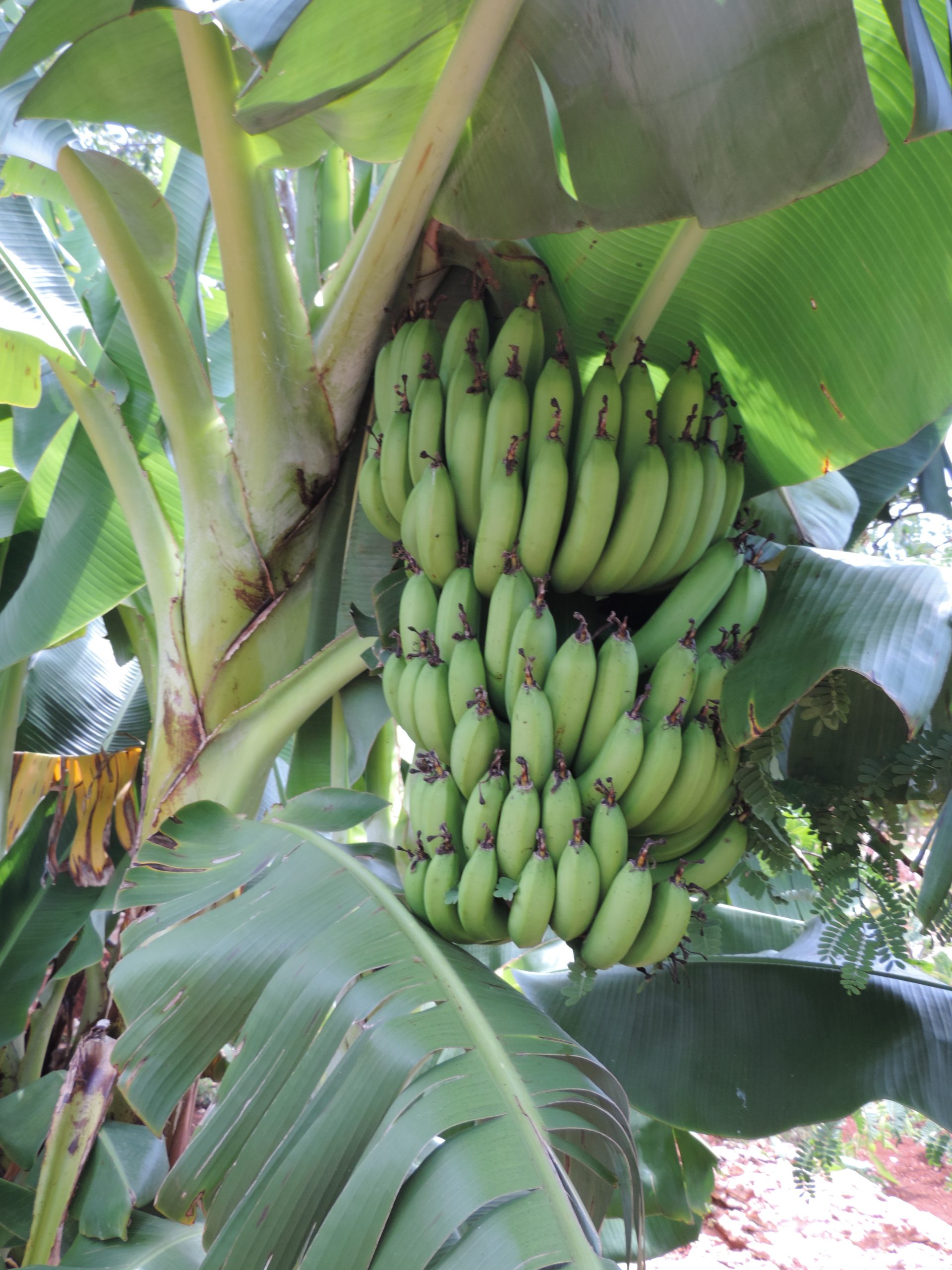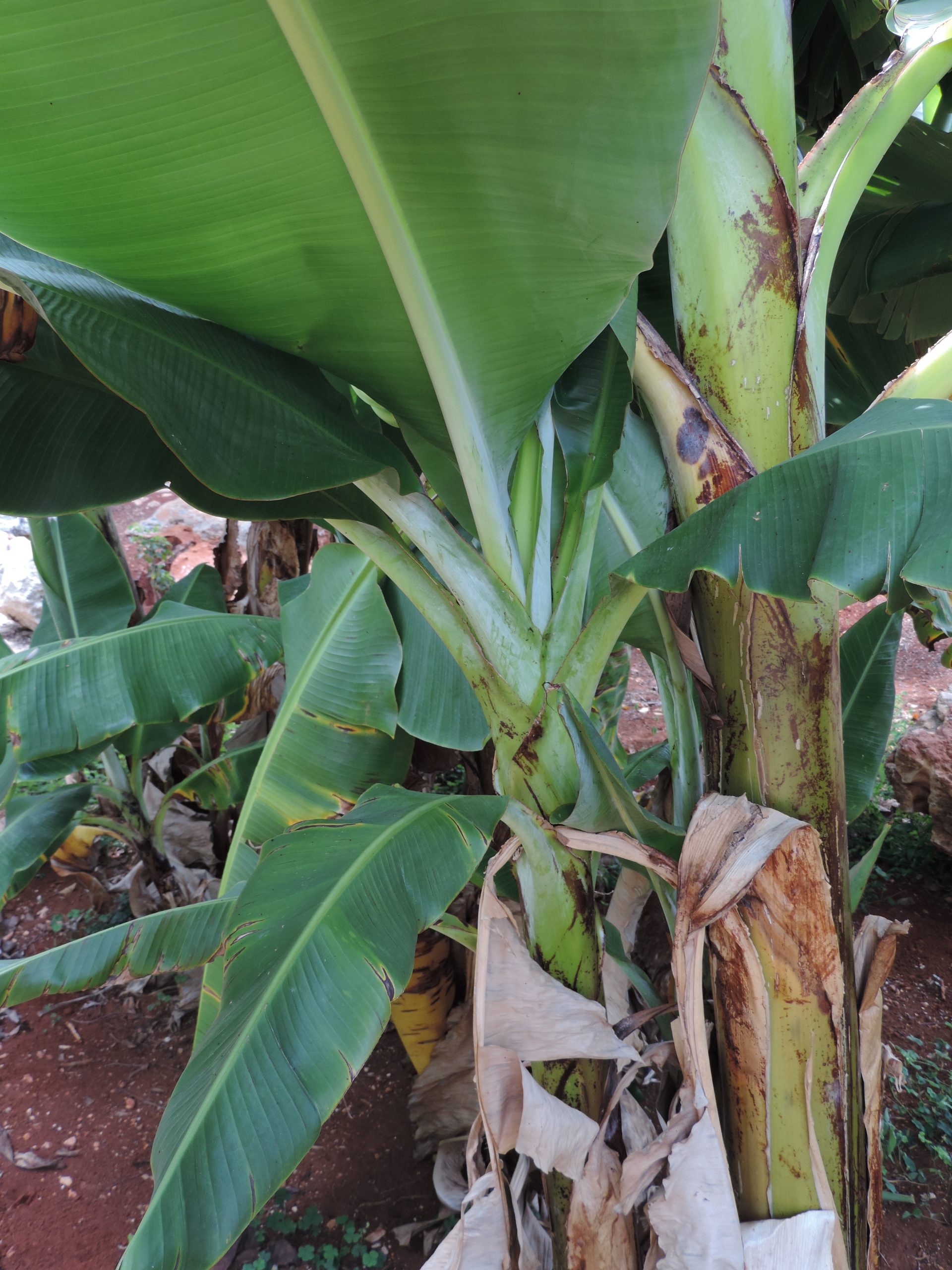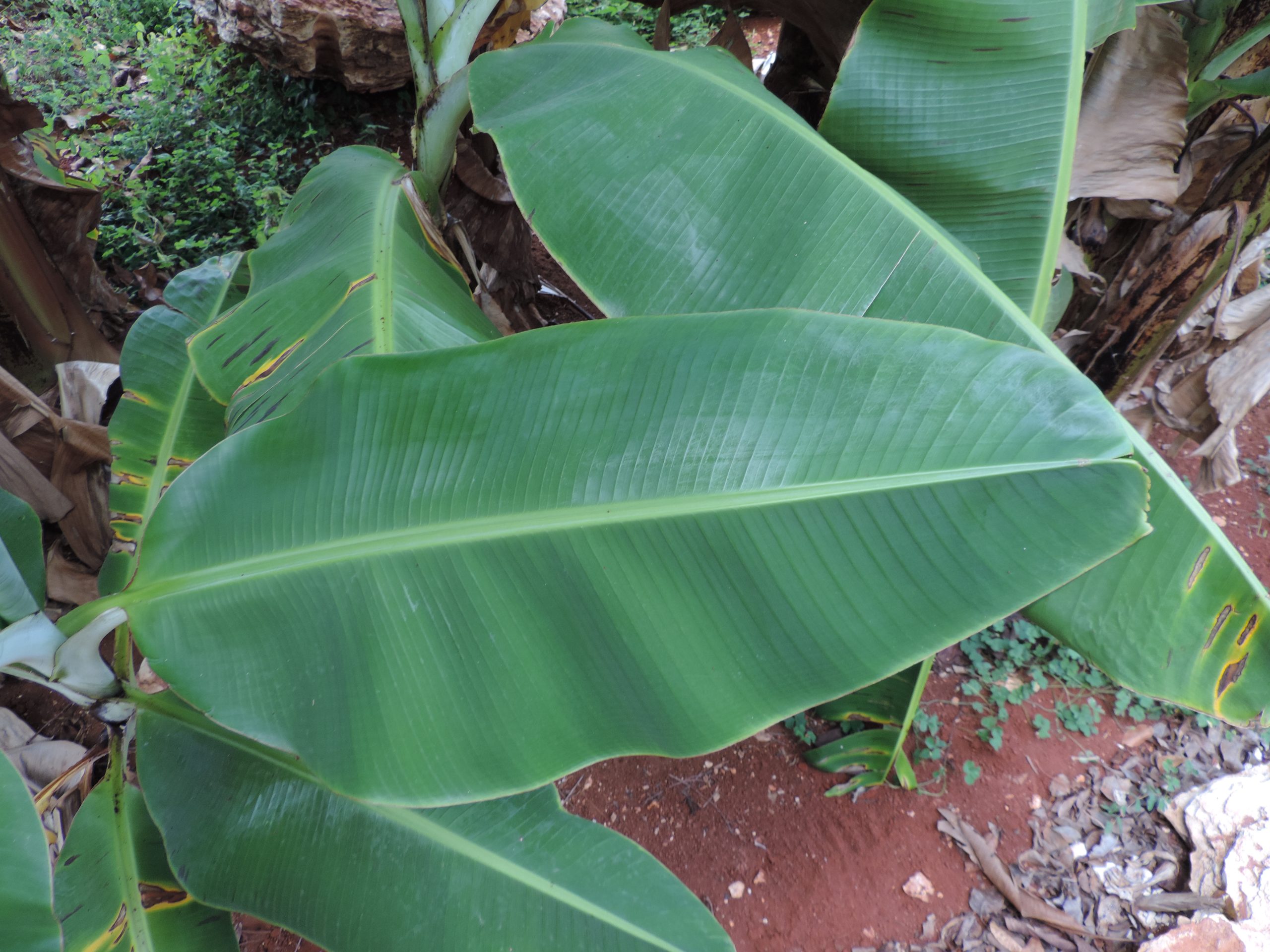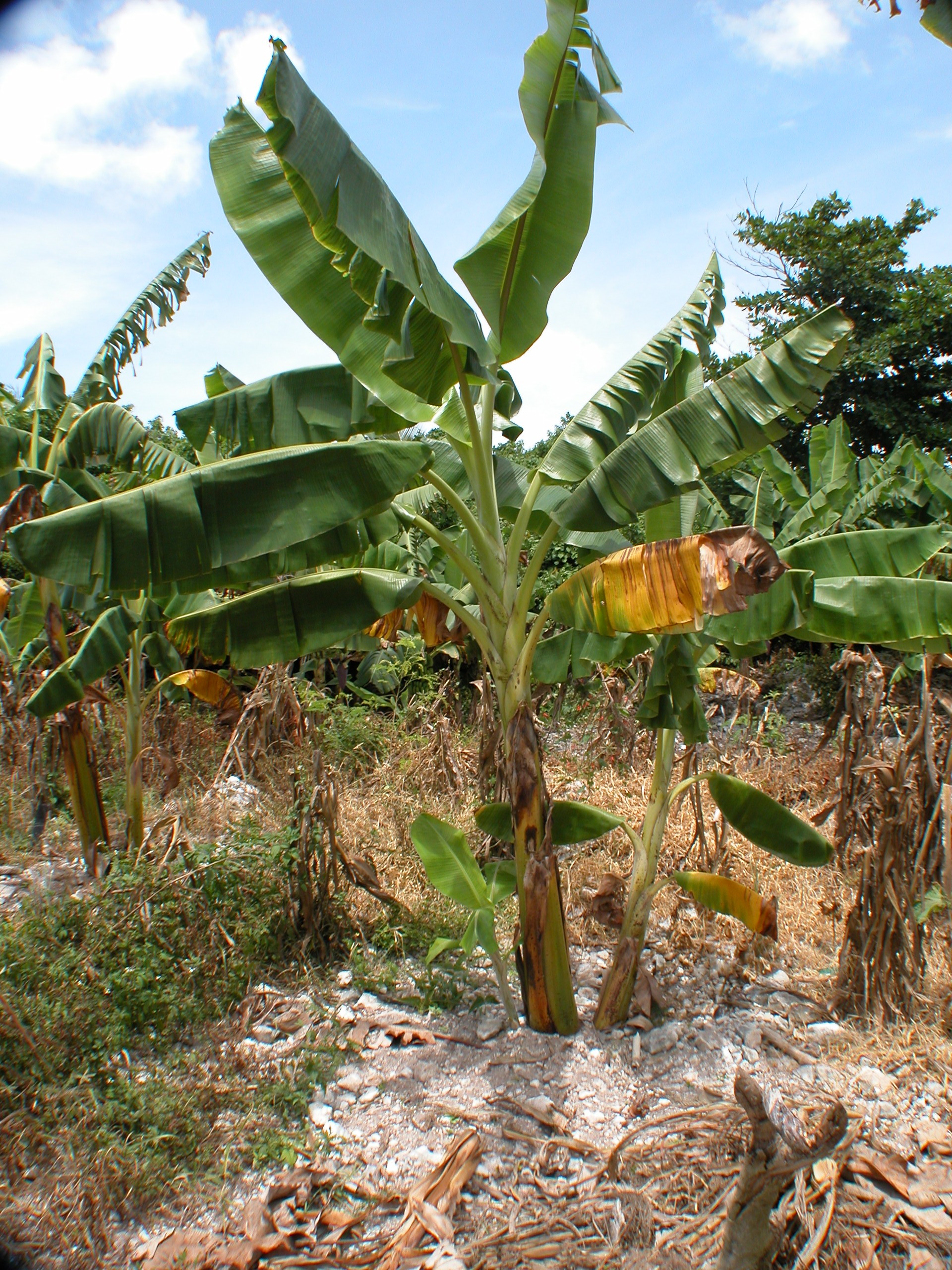Habit: Musa x paradisiaca is a succulent/non-woody perennial tree growing to 7 m in height. The leaves are arranged alternately to 2 m in length with a leaf sheath, elliptic with an entire margin and acute leaf apex.
The complete, perfect, zygomorphic flowers are arranged in pendulant spadix. Flowers in groups (hands) subtended by a large bract (spathe). The perianth has 6, yellow, fused forming a tube, tepals. There are 6 stamens in 2 whorls. The carpel has an inferior ovary with 3 locules. The fruit a fleshy “berry”. Most Musa x paradisiaca are sterile hybrids forming no seeds.
Habitat: Musa x paradisiaca in Human Altered environments (yards, gardens, farms).
Distribution: Musa x paradisiaca is NOT native to the Lucayan Archipelago but is found on most of the island groupings. It is native to Southeast Asia and is now found throughout the world in tropical and subtropical regions.
Medicinal/Cultural/Economic usage: Musa x paradisiaca is used medicinally in the Lucayan Archipelago to treat hypertension and arthritis as well as colds and flu, gastrointestinal issues, circulatory problems and to stop bed wetting in children.
The fruits are edible and eaten either raw or cooked.
